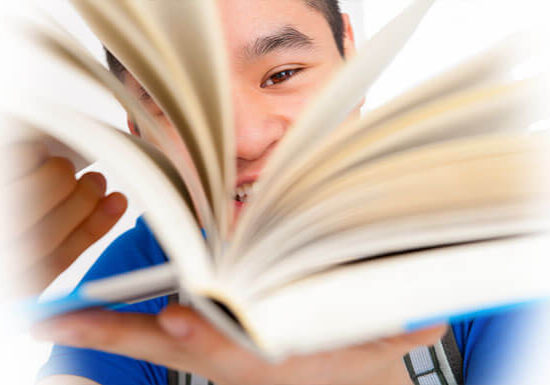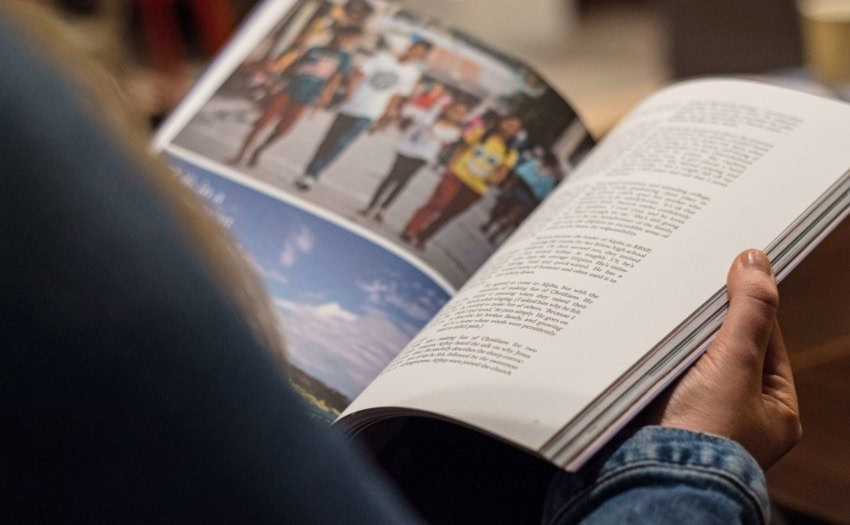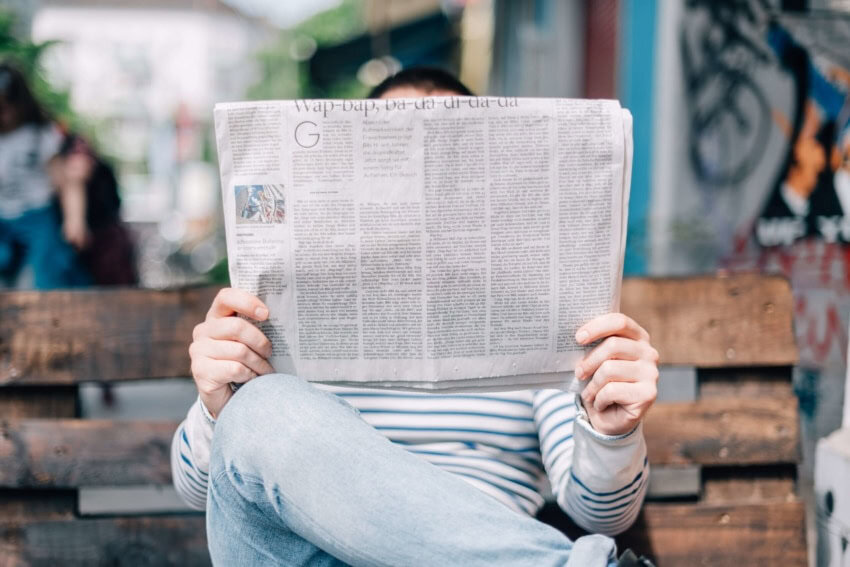Reading Techniques – Enhance Your Academic Skills
Updated: June 19, 2024
Published: February 9, 2020

As a student, you are required to read, and read a lot! Students are asked to read research studies, news articles, textbooks, web pages, lecture slides, and instructions from teachers. With all that reading, knowing the best reading techniques can get you a big step ahead. Just what are the right techniques? Read on to find out.
Set a Purpose by Asking “Why?” and “What?”

Photo by Tamarcus Brown on Unsplash
Active reading is also called global understanding, and it is characterized by asking yourself questions throughout the text.
1. Global Understanding
While you are reading, you will increase your reading comprehension by maintaining a global understanding of what is being read. Ask yourself questions such as, “Why did the author add this here?” or “What is the significance of this fact or event?”
Asking yourself these questions helps you to stay motivated to focus on the content.
2. Create a Mindmap
A mindmap is a nonlinear collection of related ideas. Putting facts you read about in a mindmap will help you see the bigger picture and increase your understanding of the material.
You can create a mindmap by starting with the main idea in the middle of a piece of paper or use a computer application such as Canva. You can create new ideas that stem from that original topic that you come across as you read, and you can create more ideas stemming from those smaller topics. Use as many colors, and unique lines as you need to make your mindmap make the most sense to you.
Top Reading Techniques
The best reading techniques are the SQ3R technique, skimming, scanning, active reading, detailed reading, and structure-proposition-evaluation.
1. The SQ3R Reading Technique
This reading technique involves five different steps, each one with the goal to get you closer to full comprehension of the text.
- Survey: First survey the piece to get a quick idea of the content and structure of the reading. By doing this, you are preparing your mind.
- Question: Prepare questions for yourself to go over as you read the material. One trick on how to create questions is to turn paragraph titles into questions. For example, a title such as “Women in the Civil War,” could turn into the question: “Who were the women in the civil war, what did they do, and when?”
- Read: Read with your questions in mind. In this step, you can combine other reading techniques that may work for you such as scanning or active reading.
- Recite: Now it is time to go back and answer those questions you created. Make sure what you read makes sense, and that you understand how it answers your questions.
- Review: Make mental notes or say aloud what you have learned. Try doing so without looking at your notes or the text to check what you have or have not retained.
2. Reading Technique: Skimming

Photo by Blair Fraser on Unsplash
Also called getting the ‘gist’ of the text, skimming is a reading technique where you can glance over the material to find what you are looking for. This is best used when you already know the general idea of the text. You can also skim material before going for further reading. Getting a first glance of how a chapter or article is laid out, for example, will help you to know where to look for key information on the second read.
Use skimming for:
- reading service or product reviews
- going over a speech last minute
- quick research
- quick review before an exam
Skimming can save you a lot of time by making you aware of the key points without fully comprehending the entire text. It will also save you time if you need to re-read the material more in-depth at a later time.
3. Reading Technique: Scanning
Scanning is a reading method used when simply running your eyes over a text, usually to find what you are looking for, or to find anything that ‘pops’ out at you. This is a commonly used reading technique for daily, non-academic reading tasks.
Scan when reading:
- list of email subjects
- news articles
- a food or drink menu
4. Reading Method: Active Reading

Photo by David Iskander on Unsplash
Active reading gives you a much more in-depth understanding of the text in front of you. This reading method should be used when you are reading something complex or something that you need to think critically about. In order to read actively, you must ask yourself questions throughout the text, and reflect on those questions. Try to relate what you are reading to previous experience and knowledge, and take notes if it helps as well.
Read actively with:
- new, difficult and unfamiliar material
- reading material you will need to know well
- Reading Method: Detailed Reading
Detailed reading is the most labor-intensive and time-consuming reading technique. Readers carefully read, consume, and analyze each word for meaning. Piecing together the meanings of words in a sentence to provide a deeper understanding can take time and patience, but in some cases, this is the best technique to use.
Use this method with:
- scholarly research articles
- medical reports
- poetic literature
- Reading Technique: Structure-Proposition-Evaluation
This reading method, sometimes called the SPE method, was proposed by Mortimer Adler in his 1940 book titled, How to Read a Book. Mortimer suggests that the best way to read a book is to find the structure, author-made propositions, and to create your own evaluations.
To use this reading method, you must first identify the structure of a text and create an organized layout either in your mind or on paper. After you have the layout, you go on to find all of the logical propositions that go into each section of the layout. Then you evaluate the arguments and propositions and make your own conclusion about the reading.
Active and Critical Reading
If you’ve ever found yourself half a page deep and realize you haven’t taken in anything that was written, you aren’t actively reading. Active and critical reading help you to retain the information you’re reading by giving you an in-depth understanding of the text.
To get into active reading, ask yourself questions throughout. Think critically about the meaning of the words, the significance of the facts, or the purpose the author is putting forth. As you continue reading actively, it will become more of a habit.
Other Helpful Reading Tips

Photo by Roman Kraft on Unsplash
1. Vary Reading Rate
Be flexible as you read your material. There are certain times when you want to increase your reading speed for efficiency. Do this if you are already familiar with the material, on repetitive examples or illustrations, and on general concepts.
There might be other times within the same text that you need to slow down and pay attention. Decrease your reading speed when you find yourself running into unfamiliar words or if you don’t understand what the word means in context, long-winded sentences and paragraphs, highly detailed information, and information you really need to retain.
Shift your reading from faster to slower when you need to and you will retain the necessary information that you need without wasting time on the sections you don’t need.
2. Lookout for Pivotal Words
There are several phrases, conjunctions, and other words that will help you understand what’s coming next. Knowing these can be a big help when deciding how to read the following section.
Repetitive words such as “in other words,” and “to repeat,” may mean you are about to get a repeat of information and can skim.
Cause-and-effect words, on the other hand, should be paid attention to. These words include “because,” “so,” “consequently,” and “therefore.”
Summarizing words will be followed by information that can give you the big picture. These include, “for these reasons,” and “in conclusion.”
Intensive and Extensive Reading
Intensive reading is the type of reading that is detailed, time-consuming, and ensures that the reader understands the material. Reading rate is usually slow, with a lot of reflection during reading time. This type of reading helps for information retention and for multi-language learners.
Extensive reading, on the other hand, is reading for pleasure. It also may be done at a leisurely pace. Most of the time, readers will not think twice about their reading techniques while extensively reading because they are enjoying it. Extensive reading is common for novels and also can be done to increase vocabulary and writing abilities.
Genetics and Learning

Photo by Josh Applegate on Unsplash
Genes do play a factor in intelligence and learning. Things such as working memory and musical or athletic ability are heritable traits. Scientists have discovered the genes responsible for IQ, which can determine how well someone may do in school.
However, it is extremely important to remember that learning is not IQ and that anyone can have the capacity to learn regardless of their family’s past successes or failures.
Learning reading techniques, for example, is independent of genes and is different than reading ability or learning disabilities. Anyone can learn the reading methods we have outlined and greatly improve their reading skills. Just like with learning any new skill, practice makes perfect.
Follow our tips and you’ll be a better student in no time. If you’d like to read more study tips that will help you succeed, click here.
